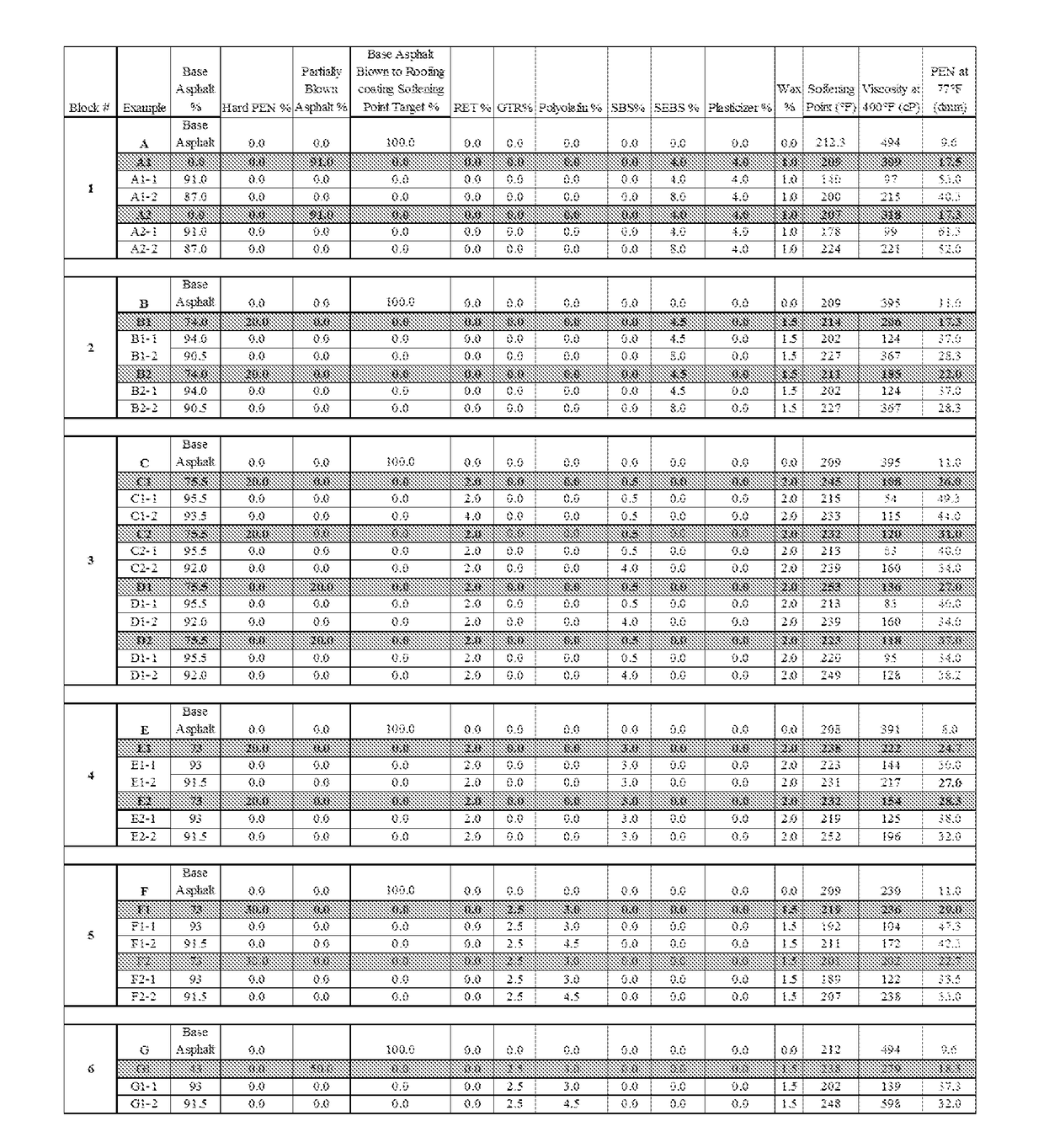Polymer modified asphalt for industrial applications
- Summary
- Abstract
- Description
- Claims
- Application Information
AI Technical Summary
Benefits of technology
Problems solved by technology
Method used
Image
Examples
examples
[0040]A series of blends were made in accordance with this invention and blends were also made in accordance with the prior art for comparative purposes. These blends were made with various paving grade asphalts which could not be processed using conventional techniques into industrial asphalt which would be useful in roofing applications. A summary of these compositions and their properties is reported in the following tables.
TABLE 2PENSofteningViscosityatBasePartially%%%Pointat 400° F.77° F.Block #AsphaltBlownSBSPolyButadieneResin(° F.)(cP)(dmm)7H1No0.000.000.001323133H1-1No6.500.004.00237310178I1Yes0.000.000.0021020912.3I1-2Yes0.006.000.00225263169J1Yes0.000.0017814413J1-2Yes0.008.500.002111931810K1Yes0.000.000.0018414313K-2Yes0.008.500.0022119016
PUM
| Property | Measurement | Unit |
|---|---|---|
| Temperature | aaaaa | aaaaa |
| Temperature | aaaaa | aaaaa |
| Temperature | aaaaa | aaaaa |
Abstract
Description
Claims
Application Information
 Login to View More
Login to View More - R&D
- Intellectual Property
- Life Sciences
- Materials
- Tech Scout
- Unparalleled Data Quality
- Higher Quality Content
- 60% Fewer Hallucinations
Browse by: Latest US Patents, China's latest patents, Technical Efficacy Thesaurus, Application Domain, Technology Topic, Popular Technical Reports.
© 2025 PatSnap. All rights reserved.Legal|Privacy policy|Modern Slavery Act Transparency Statement|Sitemap|About US| Contact US: help@patsnap.com


